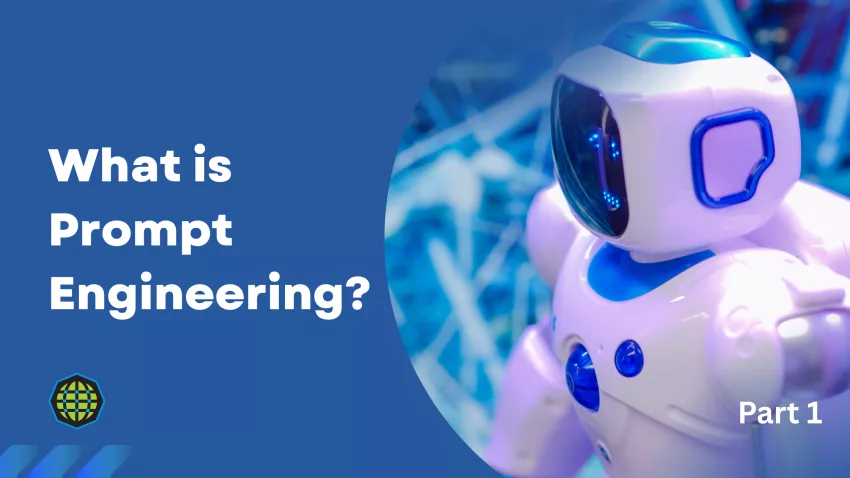Introduction to Prompt Engineering
As the world of software development continues to evolve, the need for effective utilization of Artificial Intelligence (AI) is growing rapidly. AI models like OpenAI’s ChatGPT, Google’s Gemini, and Anthropic’s Claude have revolutionized the way developers interact with technology. The ability to ask these models for help has become an essential skill for developers across the globe. This is where prompt engineering comes into play.
In simple terms, prompt engineering refers to the practice of crafting input queries (or prompts) that guide AI models to produce relevant and accurate outputs. This skill is becoming as fundamental as knowing how to write code. Whether it’s for code generation, debugging, or documentation, prompt engineering is fast becoming an indispensable tool for modern developers.
This article will explore the core concept of prompt engineering, its evolution, and why it is now a critical skill for developers. It will also provide practical examples to illustrate how effective prompts can drastically improve development efficiency.
What is Prompt Engineering?
Prompt engineering is the art and science of designing and refining the inputs to AI systems in a way that produces useful and accurate outputs. It’s a skill that involves understanding how AI language models interpret instructions and how to manipulate these instructions to achieve the desired result.
The prompts we give AI models like GPT-3 or GPT-4 are essentially commands that tell the AI what kind of response we want. For example, a vague prompt like “write some code” could yield unclear or incomplete results. However, a well-structured prompt such as “generate a Python function that sorts a list of integers in ascending order and includes error handling” would give the AI clear guidelines to produce more relevant and helpful output.
As the capabilities of AI systems like ChatGPT continue to improve, the demand for developers who can effectively interact with these models is skyrocketing. Understanding how to craft specific, context-rich prompts is now a highly valuable skill for developers.
The Role of Prompts in AI Tools
Prompts act as instructions for AI models, similar to how developers use API calls to interact with different services. Think of a prompt as a query that specifies what kind of output you want from the AI. Whether you’re asking the AI to write a snippet of code, provide a technical explanation, or generate a summary, the prompt dictates the model’s response.
Consider a prompt as an API request: just as an API requires specific inputs to return meaningful data, an AI model needs precise prompts to generate the desired output. The better the prompt, the better the response.
Real-World Analogy:
Imagine you’re at a restaurant, and the waiter asks what you’d like to eat. If you say “food,” the waiter might be confused and ask for more details. But if you specify, “I’d like a vegan burger with no onions and extra avocado,” the waiter has clear instructions and can fulfill your request accurately. Similarly, providing specific prompts to an AI model leads to more precise and relevant outputs.
How LLMs Interpret Prompts
Large Language Models (LLMs) like ChatGPT interpret prompts by analyzing the patterns in the text and predicting the most likely response based on the input and their training data. This process is known as pattern prediction. LLMs look for context within the prompt and apply their vast knowledge base to generate an appropriate response.
For example, if you ask an LLM to “generate a function to check if a number is prime,” the model understands that you’re requesting a mathematical algorithm, and it will output a function written in a programming language like Python or JavaScript.
However, understanding how the AI interprets prompts is crucial. A vague prompt, such as “generate a function,” might not provide the necessary context, resulting in an unoptimized or incomplete function. By adding constraints (e.g., “generate a Python function for a prime number check with error handling and test cases”), the AI will better understand the context and provide more refined code.
Why Prompt Engineering is a Skill, Not a Trick
At first glance, prompt engineering might seem like a simple task of typing words into an AI tool. However, it’s much more than that. The true value of prompt engineering lies in its ability to structure the prompts in a way that leverages the full potential of AI tools. It’s about asking the right questions, providing the right context, and refining the prompt through iterations to achieve optimal results.
Just like writing well-structured code requires practice and experience, crafting effective prompts requires an understanding of the AI model, its strengths, and its limitations. A poorly constructed prompt may yield a response that’s not only incomplete but potentially incorrect. On the other hand, a well-crafted prompt can produce highly accurate and insightful responses, saving developers time and effort.
Conclusion
Prompt engineering is a critical skill for developers working with AI tools. It’s more than just knowing how to ask questions—it’s about understanding how to communicate effectively with AI models to maximize their usefulness. Whether you’re generating code, debugging, or automating tasks, prompt engineering is a powerful tool that can enhance your productivity and development workflow.
In the next part of this series, we’ll explore why developers should care about prompt engineering and how it can be applied to improve development tasks like code generation, debugging, and unit testing.
Stay tuned for Part 2 of our series, where we will explore why developers should care about prompt engineering and how it can be applied to improve development tasks like code generation, debugging, and unit testing.
